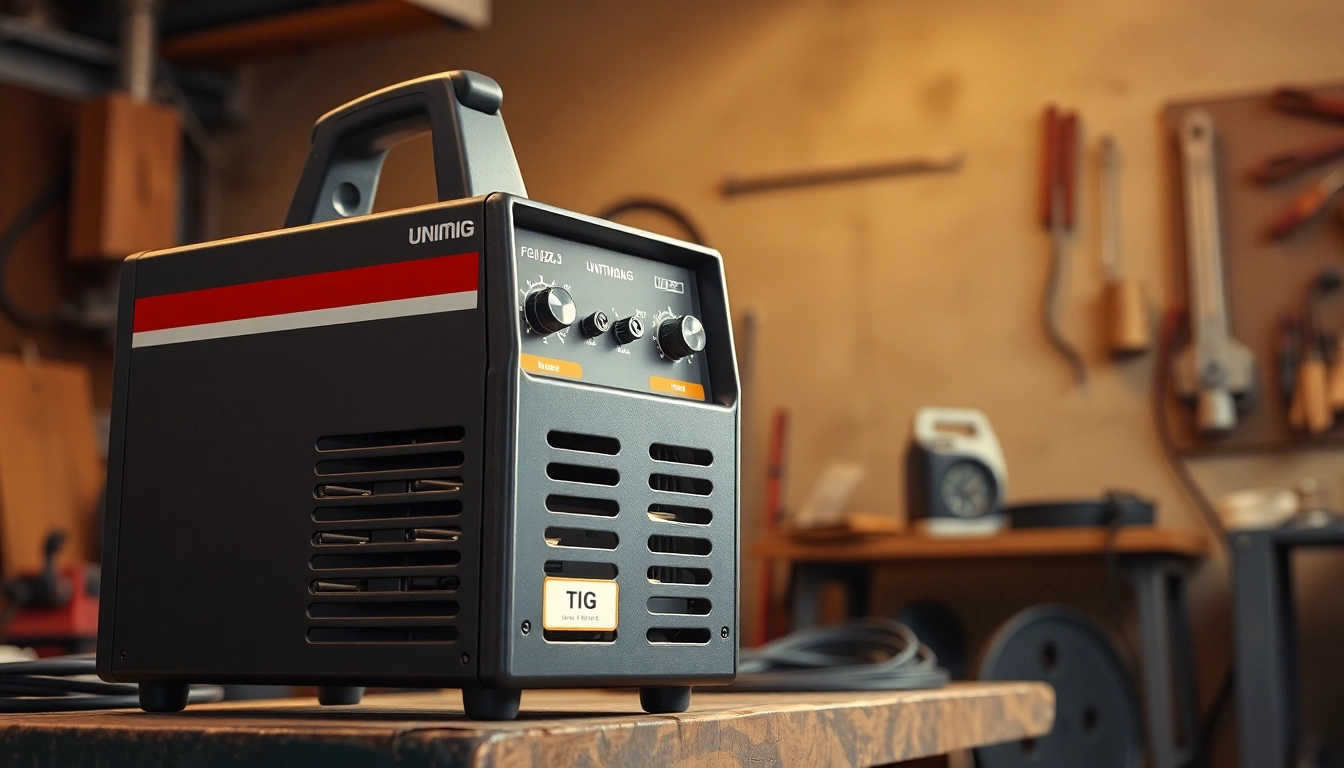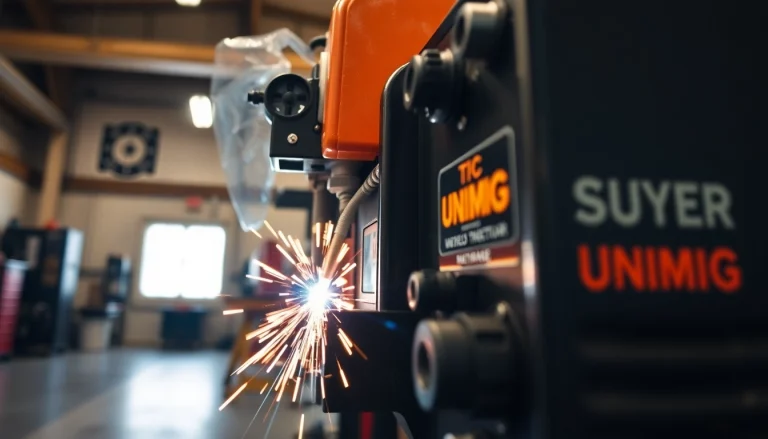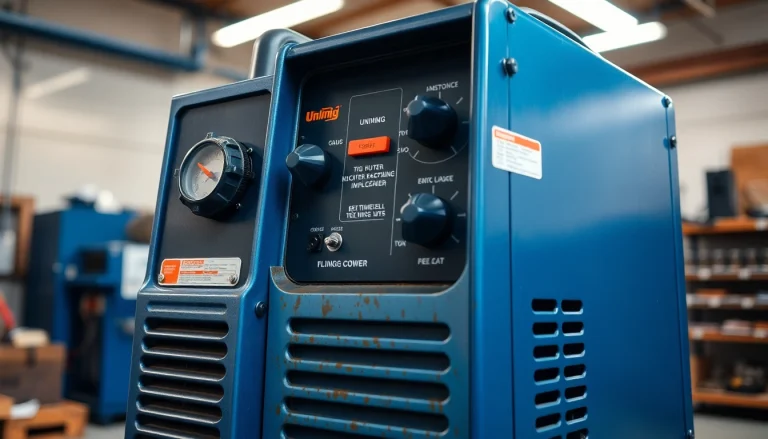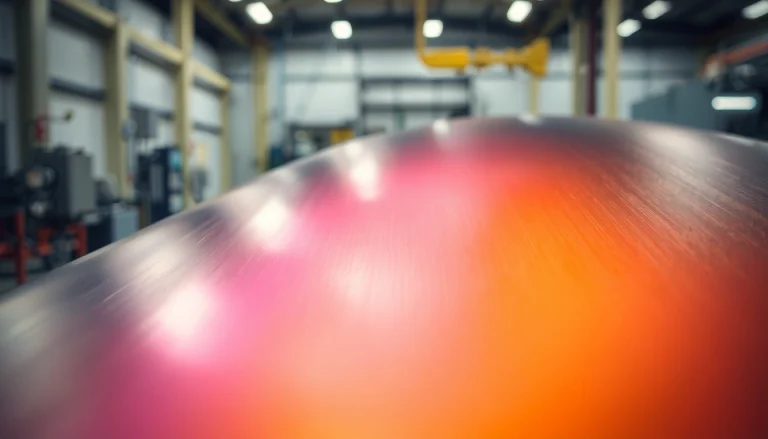
Understanding the Unimig TIG Welder
What is a TIG Welder?
TIG welding, or Tungsten Inert Gas welding, is one of the most precise welding techniques available, renowned for its ability to produce clean, high-quality welds on a range of materials. The process involves using an non-consumable tungsten electrode to produce the weld. It is often utilized in applications where precision and quality are paramount, such as in aerospace, automotive, and art fabrication. With the advancement in welding technology, easy-to-use systems like the unimig tig welder have made it more accessible for hobbyists and professionals alike.
Key Features of the Unimig TIG Welder
The Unimig TIG welders are specifically designed to offer a blend of portability, user-friendliness, and functionality. Some of the key features include:
- High-Frequency Start: This feature enables a smooth start without the electrode touching the workpiece, minimizing contamination.
- AC/DC Capability: Many models can switch between alternating current (AC) for aluminum welding and direct current (DC) for other metals, increasing versatility.
- Foot Pedal Control: Provides the operator with the ability to control the output amperage, allowing greater control and finesse in the welding process.
- LCD Display: A clear display provides real-time feedback and allows adjustment of settings seamlessly.
- Thermal Overload Protection: Built-in protection to prevent overheating, which extends the lifespan of the welder.
Benefits of Using a Unimig TIG Welder
Utilizing a Unimig TIG welder comes with several advantages that can enhance both the quality of work and the efficiency of the welding process:
- Precision and Quality: The ability to control the heat output leads to cleaner welds with minimal spatter, essential for applications requiring high-quality results.
- Versatile Material Compatibility: Whether it’s stainless steel, aluminum, copper, or even tungsten, Unimig welders are equipped to handle various materials effectively.
- Portability: Many models are lightweight and compact, making them ideal for fieldwork and on-site applications.
- User-Friendly: Designed with intuitive controls, making them accessible for both new and experienced welders.
Choosing the Right Unimig TIG Welder for Your Needs
Comparing Different Models: Viper vs Razor
The Unimig brand offers different series of TIG welders, notably the Viper and Razor models, each tailored to specific user needs. The Viper series is designed typically for hobbyists and small workshops, whereas the Razor series targets industrial usage with more advanced features:
- Viper Models: Generally lighter and easier to start with, these machines come with setup guides that cater to novices. Their price points make them a good starting point for those new to TIG welding.
- Razor Models: Built for professionals, these models often include enhanced features such as improved duty cycles, greater amperage ranges, and additional program settings for precision welding. They are a great investment for serious welders looking to expand their capabilities.
What to Look for in a Unimig TIG Welder
Choosing the right Unimig TIG welder involves a few essential considerations:
- Power Requirements: Assess what power supply is available and select a model that meets those requirements. Look for options that operate well on both 240V and 415V power sources.
- Amperage Range: Depending on the materials and thickness you plan to weld, it’s vital to choose a model with an appropriate range of amperage settings.
- Portability: If you plan to move the welder frequently or use it outdoors, consider a lightweight model that is easy to transport without compromising on features.
Price Points and Budget Considerations
Unimig TIG welders are available in a range of price points, accommodating different budgets. Expect to find basic models starting at approximately $1000, while professional-grade units can exceed $2000. When considering a purchase, factor not only the initial cost but also potential future needs such as replacement parts, consumables (like tungsten electrodes and filler rods), as well as the potential for upgrades or additional features.
Getting Started with Your Unimig TIG Welder
Setup Instructions: Getting It Ready to Weld
Setting up a Unimig TIG welder starts with essential steps:
- Assemble the Welder: Following the manufacturer’s guidelines, assemble your welder and connect it to a stable power supply.
- Connect the Torch: Securely attach the TIG torch to the welder, ensuring it is properly fitted for optimal performance.
- Fill the Gas Cylinder: Make sure your inert gas supply (often Argon) is ready for use. Proper gas flow is critical for a clean weld.
- Set the Initial Settings: Before starting, adjust the settings (AC/DC, amperage, pulse settings) based on the material you intend to weld.
Essential Safety Practices for TIG Welding
Safety is paramount when it comes to welding. Follow these essential practices to ensure a safe working environment:
- Wear Proper Protective Gear: Essential PPE includes welding helmets, gloves, protective clothing, and safety glasses.
- Ventilation: Ensure the workspace is well-ventilated to avoid inhaling harmful fumes.
- Check Equipment Regularly: Regularly inspect cables, hoses, and devices for wear and tear to prevent accidents.
Basic Techniques for Beginners
For those just starting with TIG welding, practicing fundamental techniques is essential:
- Hold the Torch Steady: A steady hand is crucial for creating uniform welds. Practice maintaining a consistent distance from the workpiece.
- Controlling Heat: Adjust the amperage based on the material and thickness to avoid burn-through.
- Pacing: Maintain a consistent speed as you move along the joint, ensuring even distribution of heat and filler material.
Advanced Techniques for Unimig TIG Welding
Using AC/DC Functions for Various Materials
Understanding when to use AC or DC settings is vital for achieving optimal results across different materials:
- DC Welding: Best suited for materials like stainless steel and carbon steels, where penetration and control of the arc are required.
- AC Welding: Primarily used for welding aluminum, AC allows for a cleaning action that prepares the surface for effective welding.
Mastering Settings and Adjustments
Advanced users understand the need for fine-tuning settings such as pre-flow and post-flow gas time, which can significantly affect weld quality:
- Pre-Flow: Setting pre-flow ensures that gas is present before the arc starts, preventing contamination.
- Post-Flow: This setting allows the gas to continue flowing after the arc has been extinguished, protecting the tungsten electrode and weld pool.
Common Challenges and How to Overcome Them
Even experienced welders encounter challenges. Here are some common issues and solutions:
- Inconsistent Arc: Ensure proper tungsten preparation and alignment of ground connections for a stable arc.
- Porosity in Welds: Check gas flow rates and ensure no contamination occurs during the welding process.
- Bubbles and Craters: Avoid holding excessive heat in one area to prevent craters. Instead, adopt a weaving technique as needed.
Maintenance and Care for Your Unimig TIG Welder
Daily Maintenance Tips
To ensure your Unimig TIG welder operates effectively, regular maintenance is essential:
- Cleaning: Regularly clean the torch and the work area to avoid build-up that can affect performance.
- Inspecting Cables: Check all cables for signs of wear and secure connections before use.
- Maintain Gas Supply: Ensure that gas cylinders are secure and full to guarantee uninterrupted welding.
How to Troubleshoot Common Issues
Even the best equipment can experience issues. Here’s how to troubleshoot some common problems:
- Welder Won’t Start: Ensure the welder is properly plugged into the power source and all safety switches are in the correct position.
- No Gas Flow: Check connections, ensure the gas cylinder is not empty, and look for any kinks in the gas line.
- Inconsistent Welding Performance: Review settings, ensure the work area is clean, and check for correct amperage and gas flow.
Long-Term Care for Optimal Performance
For long-term reliability of your Unimig TIG welder, consider the following strategies:
- Periodic Professional Servicing: Have your welder serviced by a professional to identify any potential issues before they escalate.
- Store Properly: When not in use, store the welder in a dry and dust-free environment to protect internal components.
- Familiarize with Upgrades: As technology advances, stay updated on potential upgrades or accessories that can enhance performance and efficiency.






